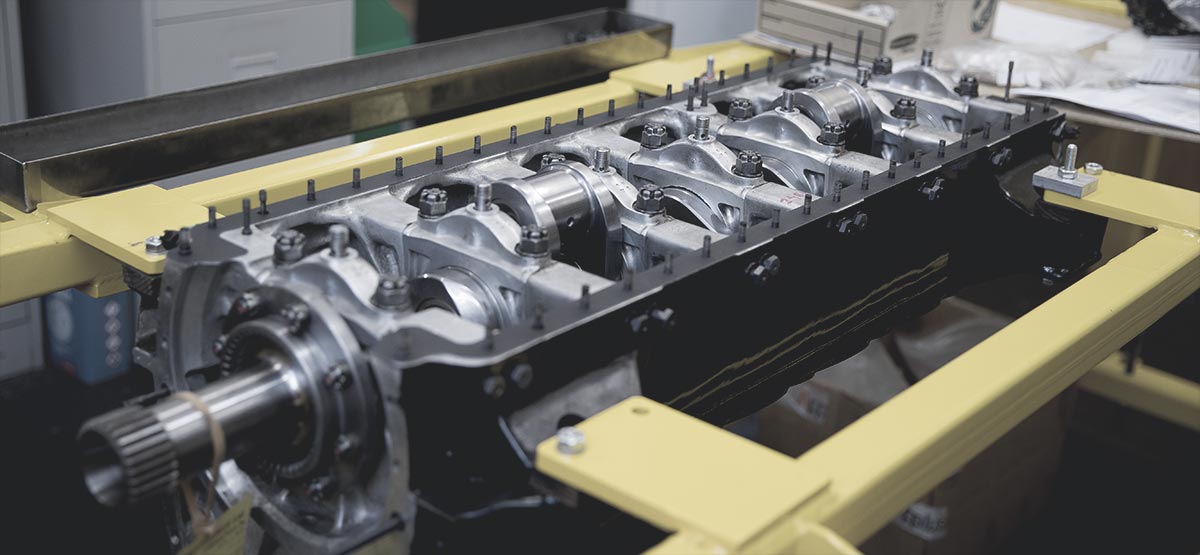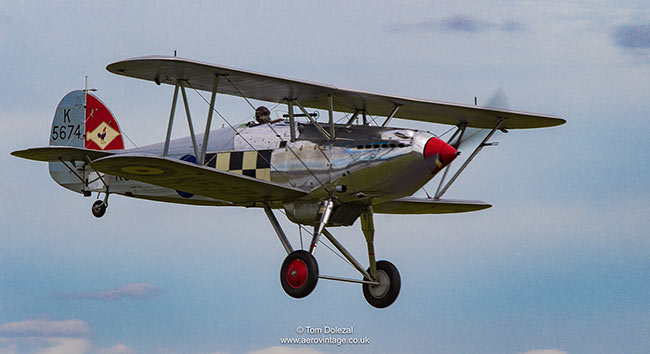Cookies
We use cookies to ensure that we give you get the best experience on our website.
Using this website means you're ok with this.
OK
Hawker Fury

Hawker Fury
Hawker Fury Mk.I (G-CBZP), K5674, manufacturers serial 41H/67550. The Hawker Fury is widely regarded as the epitome of biplane fighter development and arguably the most beautiful biplane ever created. Powered by a supercharged 525hp Rolls Royce Kestrel IIS V-12, water-cooled engine, there are no other known survivors anywhere in the world and thus the aircraft can claim to be an unique survivor. It was acquired from South Africa in 1994 after a tip-off from the RAF Museum.
The aircraft was delivered to 2 ASU on 20 November 1935 and then to 43 Sqn at RAF Tangmere on 2 June 1936. F/O FE Rosier, later to become Air Chief Marshal Sir Frederick Rosier GCB, CBE, DSO, recorded in his log book that the aircraft was 'his personal' aircraft whilst he was OC B Flight between December 1936 and January 1939. It was named by him 'Queen of North and South'. It is presumed that the name of the aircraft was painted on the side, but we have never been able to trace a photograph of the aircraft with this on it. When we find this, we will complete the aircraft. We are lucky to have F/O FE Rosier's log book which records that he first flew the Fury on 7 December 1936 and his last flight was on 21 February 1939 when the comment in his log was 'Last fling in Queen of North and South. Perfect'. Between those dates his log book records that he flew her on 394 separate sorties spread over 217 days and accumulating 293:35 hours. On 29 March 1937 he recorded reaching a height of 29,000ft! On 9 April 1937 he records visiting Duxford; he also displayed her at the Empire Air Display at Hendon in both 1937 and 1938. In January 1939, 43 Sqn was re-equipped with Hurricanes and the Furies were moved to 5 MU and then 47 MU. Finally, the aircraft is recorded 'to South Africa 5 August 1940'.
The aircraft arrived in Durban on 'Clan Mathieso' on 20 October 1940. On 15 March 1941 the aircraft, now with the serial number 215, was taken on charge by 13 Squadron (soon to be renumbered 43) based at Swartkop. On 31 March 1941 she ran out of fuel and force landed near Pitsani whilst being flown by 2/Lt Peter M. Hedley. The pilot suffered no injuries but the aircraft suffered Cat 2 damage. Records show the aircraft being stored before being delivered to No.2 Air Depot Kimberley where she was sold for scrap. The remains were found on a farm along with many other derelict aircraft and was presumably bought by the farmer for parts to use on farm equipment.
Restoration was started in earnest in 1992, with the first challenge being to re-manufacture the spars, which are a complex roll-formed item manufactured from high-tensile steel strip. Without this extremely difficult part being successfully re-made there would have been no point in going further forward, as Retrotec, by then the restoration arm of Aero Vintage and Historic Aircraft Collection Ltd. (HAC), were only prepared to restore the aircraft if it could be 100% authentic down to the smallest detail. Over the next 20 years all the engineering challenges were overcome and rare parts discovered as the restoration progressed.
We were fortunate to be lent a period photograph of the aircraft by David Rosier (ACM Sir F Rosier's son) which helped us restore the paint scheme exactly as it was in 1937, but it only showed the starboard side.
The Fury made her first post restoration flight from Goodwood (as close as we could get to Tangmere) on the 30 July 2012. The aircraft is now based at Imperial War Museum Duxford, where it is regularly flown in air displays. It is housed in Hangar 3.

